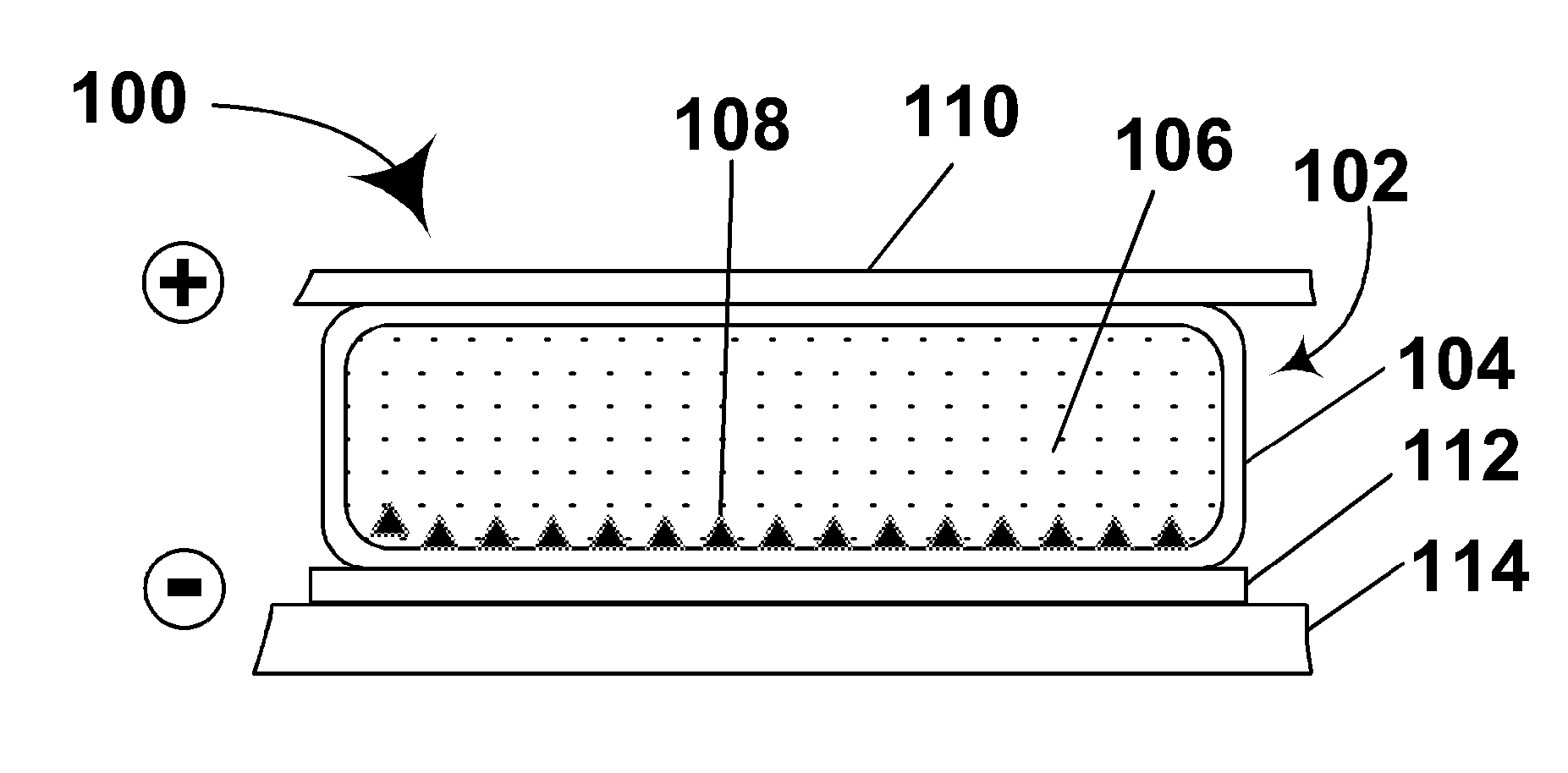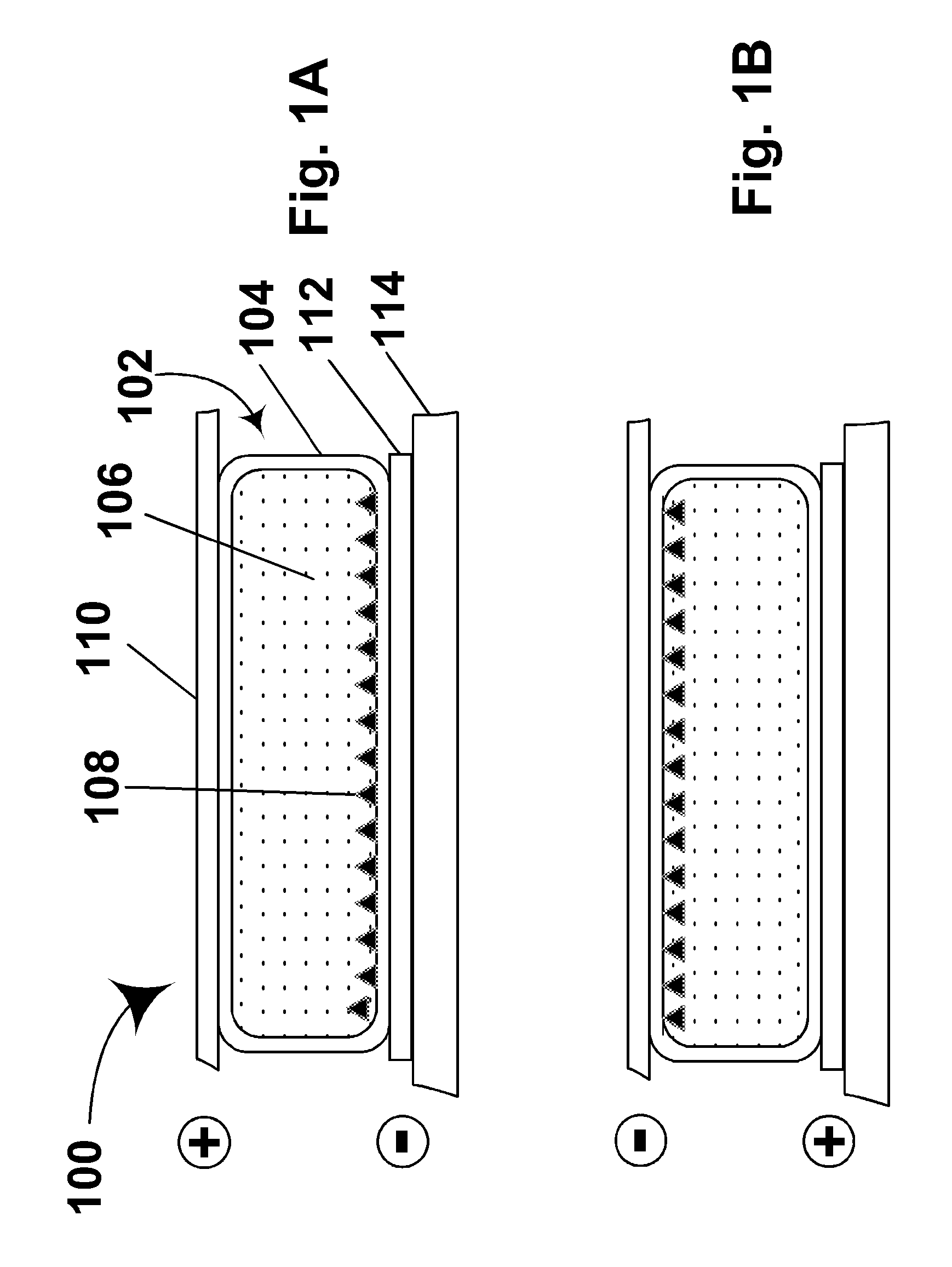Electrophoretic displays with controlled amounts of pigment
- Summary
- Abstract
- Description
- Claims
- Application Information
AI Technical Summary
Benefits of technology
Problems solved by technology
Method used
Image
Examples
example 1
[0100]An internal phase was prepared comprising 10 percent by volume white particles and 1 percent by volume black particles (carbon black) by volume in a hydrocarbon suspending fluid; the internal phase had a viscosity of 4.75 mPa sec. The white particles comprised titania and had an average size of approximately 0.6 μm and a saturation particle thickness estimated at 1.5 to 2.5 μm. The internal phase was encapsulated in gelatin / acacia microcapsules substantially as described in Paragraphs [0069] to [0074] of U.S. Patent Publication No. 2002 / 0180687. The resultant microcapsules were separated into three batches differing in wet capsule diameter size distributions. Each batch was mixed into a slurry with a polymeric binder, coated to form an electrophoretic film, and laminated to a back electrode to form a switchable display pixel, substantially as described in Paragraphs [0075] and [0076] of the aforementioned 2002 / 0180687. During the coating process, suitable equipment settings su...
examples 2-12
[0103]These Examples use three different preferred media, and for convenience these preferred media are hereinafter called “Medium A”, “Medium B” and “Medium C” respectively. These media, which are all of the encapsulated dual particle type using a polymer-coated titania white particle and a polymer-coated black particle with an uncolored suspending fluid, were prepared by the processes described below. The suspension medium used in Media A and B was a mixture of a hydrocarbon (Isopar G, available commercially from Exxon Corporation, Houston, Tex.; “Isopar” is a Registered Trade Mark) and a halogenated hydrocarbon oil (Halogenated hydrocarbon oil 1.8, available commercially from Halogenated Hydrocarbon Products Corporation, River Edge, N.J. referred to hereinafter for simplicity as “Halocarbon”) containing a dispersant (Solsperse 17000, available commercially from Avecia Ltd., Blackley, Manchester, United Kingdom; “Solsperse” is a Registered Trade Mark). Medium C uses no halocarbon ...
example 2
[0122]This Example illustrates that the addition of PIB to the suspending fluid in Medium A produces an increase in image stability greater than that attributable to the increase in viscosity caused by the PIB addition.
[0123]A preliminary series of experiments were conducted to determine the effect on the viscosity of the 1:1 w / w Isopar / Halocarbon mixture used in Media A and B. This mixture itself was found to have a viscosity of approximately 0.0021 Pa sec at 25° C., and the addition of the pigments used in Media A and B only slightly increased this viscosity.
[0124]The accompanying FIG. 4 shows the variation of relative viscosity (ηrel), that is, the ratio of the solution viscosity to that of 1:1 w / w Isopar / Halocarbon mixture, with weight fraction of PIB (XPIB) in the solution, this variation being of the expected form; the “best fit” curve is a cubic polynomial fit to the data, except that higher XPIB values not plotted in FIG. 4 were included in the data used to determine the fit...
PUM
 Login to View More
Login to View More Abstract
Description
Claims
Application Information
 Login to View More
Login to View More - R&D
- Intellectual Property
- Life Sciences
- Materials
- Tech Scout
- Unparalleled Data Quality
- Higher Quality Content
- 60% Fewer Hallucinations
Browse by: Latest US Patents, China's latest patents, Technical Efficacy Thesaurus, Application Domain, Technology Topic, Popular Technical Reports.
© 2025 PatSnap. All rights reserved.Legal|Privacy policy|Modern Slavery Act Transparency Statement|Sitemap|About US| Contact US: help@patsnap.com



